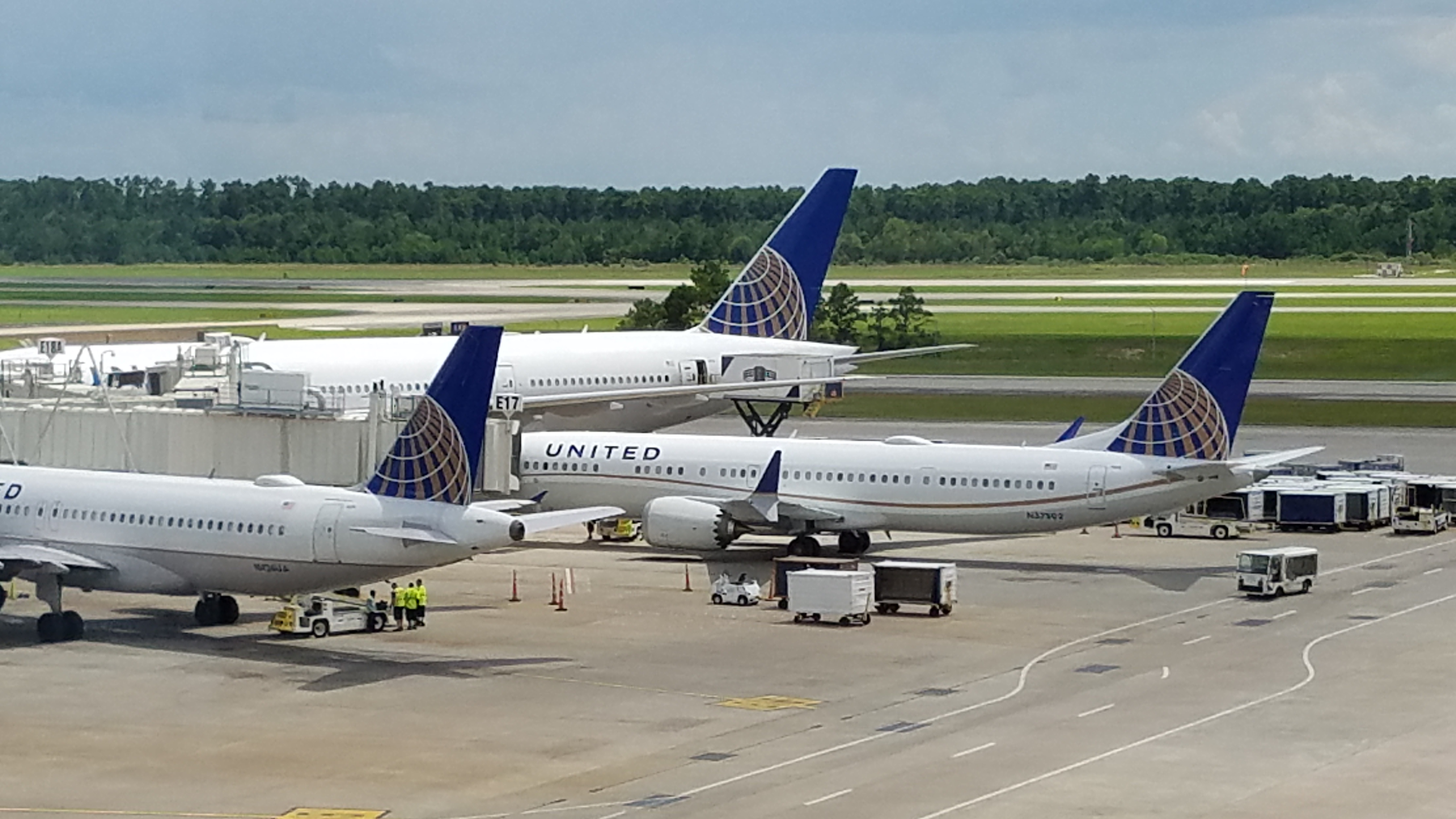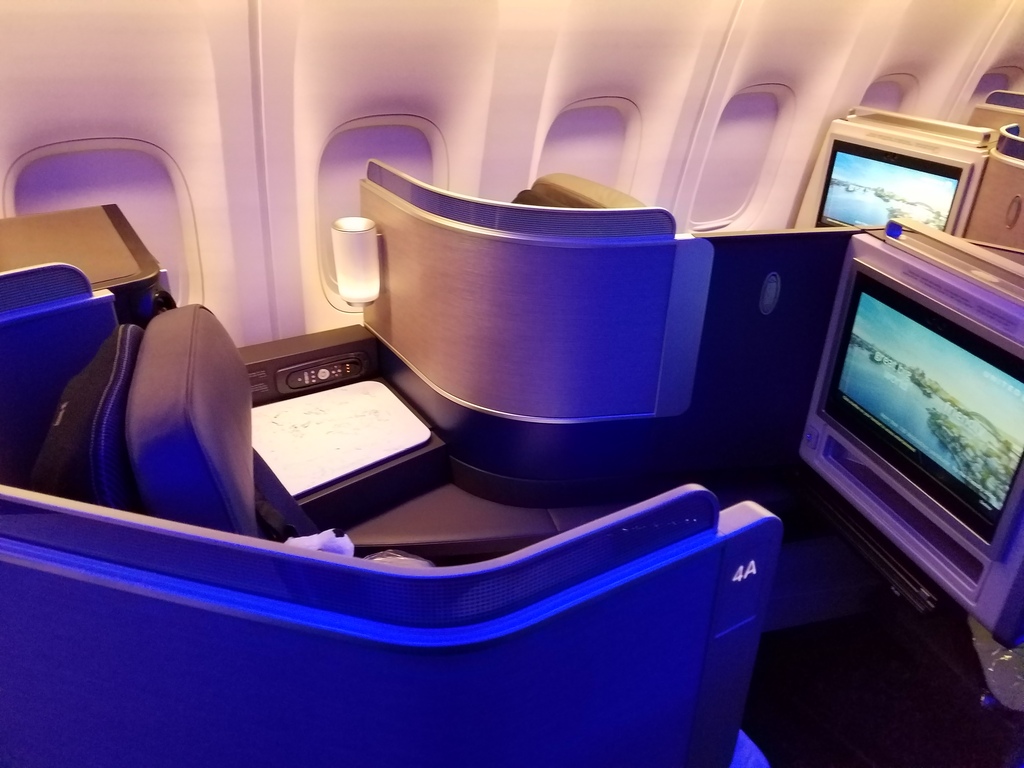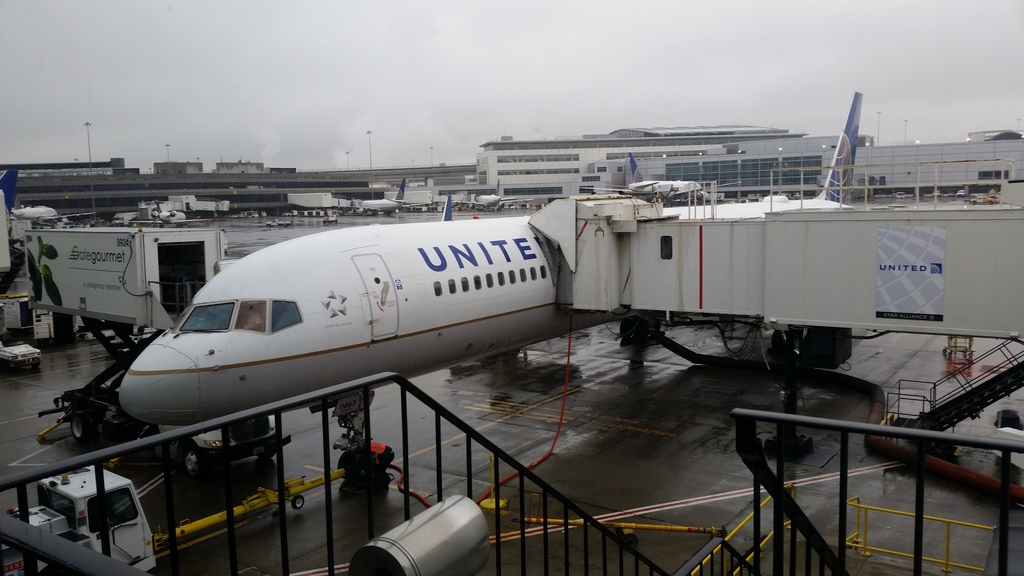JonNYC is usually a source of leaks about American Airlines, however over the weekend he broke Delta news and he’s expanded his portfolio by tweeting out United’s fleet plans.
He’ll often begin cryptically and then drip out further details. First off, he shares that United is going to start flying new Boeing 737 MAX 10 as “ps” aircraft.
Some United rumors (I know, WTF, right??)
Sure seems like 737-10 will be running PS starting in 2021
As well, seems UA is very inclined towards XLR and NMA on (far) more than an exploratory level.— JonNYC (@xJonNYC) September 4, 2019
United Boeing 737s With Lie Flat Business Class Seats
Two years ago United converted 100 Boeing 737 MAX 9 orders to MAX 10s, the stretched high-capacity version of the aircraft. The 737 MAX 9 is 10 feet longer than the MAX 8. The MAX 10 is 5.5 feet longer than the MAX 9.
What United is going to do is operate a ‘subfleet’ of their MAX 10s in a premium configuration with lie flat seats, and use them to replace Boeing 757s on premium routes like Newark – Los Angeles and San Francisco. They could also use these planes from Houston to Latin America and Newark to Ireland and secondary cities in the U.K.

United Airlines Houston
While the 737 MAX 10 is the longest 737, it’s still about 11 feet shorter than the Boeing 757-200, meaning that United’s premium transcon planes will give up seats (for instance four rows of coach).
It’s still unclear what the business class configuration will look like on the single aisle 737. United has managed to maintain direct-aisle access with their Polaris business class seats on the 767 despite the narrow fuselage for a widebody. They’ll face similar challenges with this narrowbody, which doesn’t have the fuselage width of a comparable Airbus aircraft.

United Polaris Business Class Seat
New Long Haul Narrowbody Aircraft
The Boeing 757 was intended as a replacement for the 727, but wasn’t initially successful because it held about one-third more passengers and so wasn’t viewed by airlines as a logical aircraft to order. What was special about the plane, realized over time, was that its longer range than the 727 allowed it to operate both cross country (and Hawaii) flights and short transatlantic flights.

United Airlines Boeing 757
Transatlantic Westbounds during the winter have always pushed the capability of the aircraft. United has been a big transatlantic 757 operator, and gained a reputation back in the Continental days for operating focus cities in Goose Bay and Gander because of how often there would be multiple planes on the ground in Canada for refueling when faced with significant headwinds during their journey.
The Boeing 737 MAX 10 is relatively underpowered, while it has the range for a transcon and possibly to do a limited number of Newark – Europe flights, it isn’t quite a 757 replacement.
Boeing has been expected to develop their “New Mid-market Airplane (NMA)” sometimes referred to as the 797 which would be placed between their largest and longest-range narrowbody and smallest widebody. It’s not expected to enter commercial service until 2025 at the earliest.
Airbus already has an entrant into this market, the A321XLR. American Airlines ordered 50 of those for delivery between 2023 and 2025.
Airbus has a head start, and orders, but United is seriously considering both aircraft types for its fleet even though Boeing commitment to the plane isn’t firm publicly yet.
While there has been speculation around United being a customer it isn’t real yet — but JonNYC believes United sees themselves as a real potential customer (which has been speculated, but still news).
Reconfiguring Boeing 777s
Back in 2006 United Airlines introduced lie flat seats onto their long haul aircraft. They were late to lie flat business class, and the seats weren’t very competitive. The United Boeing 777s (2-4-2) had eight-abreast seating in business class, which of course British Airways still has today.
Those planes were uncompetitive flying internationally, but well suited for heavily-trafficked domestic flights. In 2016 they took some of the legacy United 777-200s and added seats to coach (and took out seat beck entertainment screens). They went from 3-3-3 in economy to 3-4-3. In total they added nearly 100 seats to the aircraft. They’re found largely on domestic hub-to-hub routes and Hawaii flights.
JonNYC says United is looking at changing these Boeing 777s again:
also maybe some kinda change to configuration for the "domestic" 777s
— JonNYC (@xJonNYC) September 4, 2019
It’s hard to imagine too many more changes to coach. Is it possible to squeeze some more seats in back with less space? Sure. But it seems like the area where they haven’t made changes is up front to business class, which retains United’s old 2-4-2 “dorm style” business class.
If they retain these planes as domestic aircraft, I’d be surprised to see the airline investing in a better business class. On the other hand could they somehow densify the forward cabin beyond the way seats are already crammed in?


I think this must be a typo, “While the 737 MAX 10 is the longest 737, it’s still about 11 feet shorter than the Boeing 737-200, meaning that United’s premium transcon planes will give up seats (for instance four rows of coach).”
No way that the 737 MAX 10 is shorter than a 737-200. Only way this statement makes sense is if you meant shorter than a 757-200.
Think you have a typo: “While the 737 MAX 10 is the longest 737, it’s still about 11 feet shorter than the Boeing 737-200, meaning that United’s premium transcon planes will give up seats.” Shouldn’t that be 757-200?
I believe the 737MAX10 is 11feet shorter than the 757-200, not 737-200. However, UA has 6 more Y seats in their 739 vs. 752. There were 4 extra F seats in the old standard F seating vs. the 739ER meaning rows are about the same in the 752 and 739ER. This is probably due to the full sized entry door #2 on the 752. So, I expect the MAX10 to have 1 or maybe 2 additional rows vs. the 739ER. Of course a larger lie flat seating area will change total seating.
The 777’s with 10 abreast (3-4-3) are a miserable experience on a longer flight in economy. I avoid these aircraft if I possibly can if flying economy.
@paul grimes – yes that was a typo, thanks fixed
Thanks to George for putting out that typo. I kept reading that sentence over and over again in confusion.
“What is a 737-200? My 737 experiences are mostly limited to the larger NG models (e.g., -800, -900ER). Is that one of those weirdly proportioned ones that Southwest has? I’ve never flown them. I would have never thought they were longer. Perhaps it’s one of those older NG or Classic models? Wait? Haven’t the 737s gotten larger over the years? The newer models have those squared-off engines. They even had to move them up-and-forward on a MAX and it caused that debacle with MCAS. How could a -200 be larger than a MAX?”
*pulls up wikipedia*
“Oh, the 737-200 was one of the original models from the 60s. Most were retired 20 years ago. This is definitely a typo.”
*pointing out
Domestic First Class on 777 is my prediction
United’s domestic 777-200 is really horribly configured. Not comfortable anywhere you sit.
After three trans-con EWR-SFO-EWR flights in 1st half of 2017 aboard United’s 10-abreast, “densified” Boeing 777s (brand new -300ER & reconfigured -200 domestic) , even in Economy Plus (E+) rows (plus two other trans-cons, one SFO-EWR aboard a Boeing 757-200 [aka “dirtiest plane ever”]; another a Boeing 737-900ER LAX-EWR that had NO IFE at all [streaming or seat-back] in a 30” pitch row), my partner ditched United for Delta – and hasn’t looked back.
He HATED the 10-abreast seating, even in E+, for trans-con length flights overall.
And he HATED the reconfigured 777-200s that much more for NOT having seat-back IFE.
Bad enough the other two narrow-body trans-cons he flew before abandoning United in 2017 were sub-par, but in the end, it was the 10-abreast Boeing 777s that he hated for 5-6 hours that resulted in Delta becoming his airline of choice for his trans-cons since Delta flies many 767s with their wider seats and seat-back IFE that made that Delta his preferred carrier for his trips around the world, which until then, were predominantly aboard United (including Europe & Asia).
“Friends don’t let Friends (and other loved ones) book/fly 10-abreast “densified” Boeing 777s or 9-abreast 787s” is the motto in our home!
I won’t fly those planes; and one NEVER, EVER sees the CEOs or other “C-suiters” of airlines or Boeing flying in these hideous and atrocious “densified” 777 & 787 cabins.
So, why should anyone else pay good money for products so bad even the leaders of the companies that sell (and profit handsomely) these “not good enough for them” products are NEVER, EVER seen routinely using these products themselves?
Actions speak louder than words.
And the refusal of top managers who say these (awful) seats aboard their crappy (densified) planes are perfectly acceptable to actually USE the products they sell is all one needs to see to know just how bad these terrible seats really are.
If the seats they sell are NOT good enough for their own regular use, then they’re NOT good enough for anyone else to use!
So, further densification or not, as long as United’s 777s pack ten (horrible and NOT good enough for the CEO to use) seats per row, United will remain pretty much on our “No Fly List” for most of our air travel as 17.2” wide seats are too damn narrow for any flights longer than 3 hours, let alone 5 or more.
“Friends don’t let Friends (and other loved ones) book/fly[…]9-abreast 787s is the motto in our home!”
So you only fly Japan Airlines Dreamliners?
Who would want to fly on an airplane with the name Max. I won’t fly on the 737-9 Max.
United may lose me as a customer.
Yosef – United Gold for many years,
Since hot meals are no longer served in economy, removal of some of the galley sections on the domestic 777 fleet would increase available real estate for seats. Delta did this with the A320, MD88/MD90 and 757. Leave ovens for the front cabin only.
4 777-200ERs are moving to the domestic configuration; these will probably be the first ones with any revised high-density layout. The ERs will mitigate performance issues on ORD-HNL/OGG and allow EWR-HNL to move to 777 (as 764s are being redeployed elsewhere in the system).
Rumor has it that PTVs return (wireless system like DL is installing) and new seats in F cabins, possibly old CO Diamond seats. A 2-2-2 flat bed configuration would be much more pleasant than the 2-4-2 dorms, especially for Hawaii markets.
Boeing will remove the MAX name I predict. Just call it a 737-9 and move on. The same way Valujet just changed their name to AirTran and now its part of Southwest. Nobody cares.